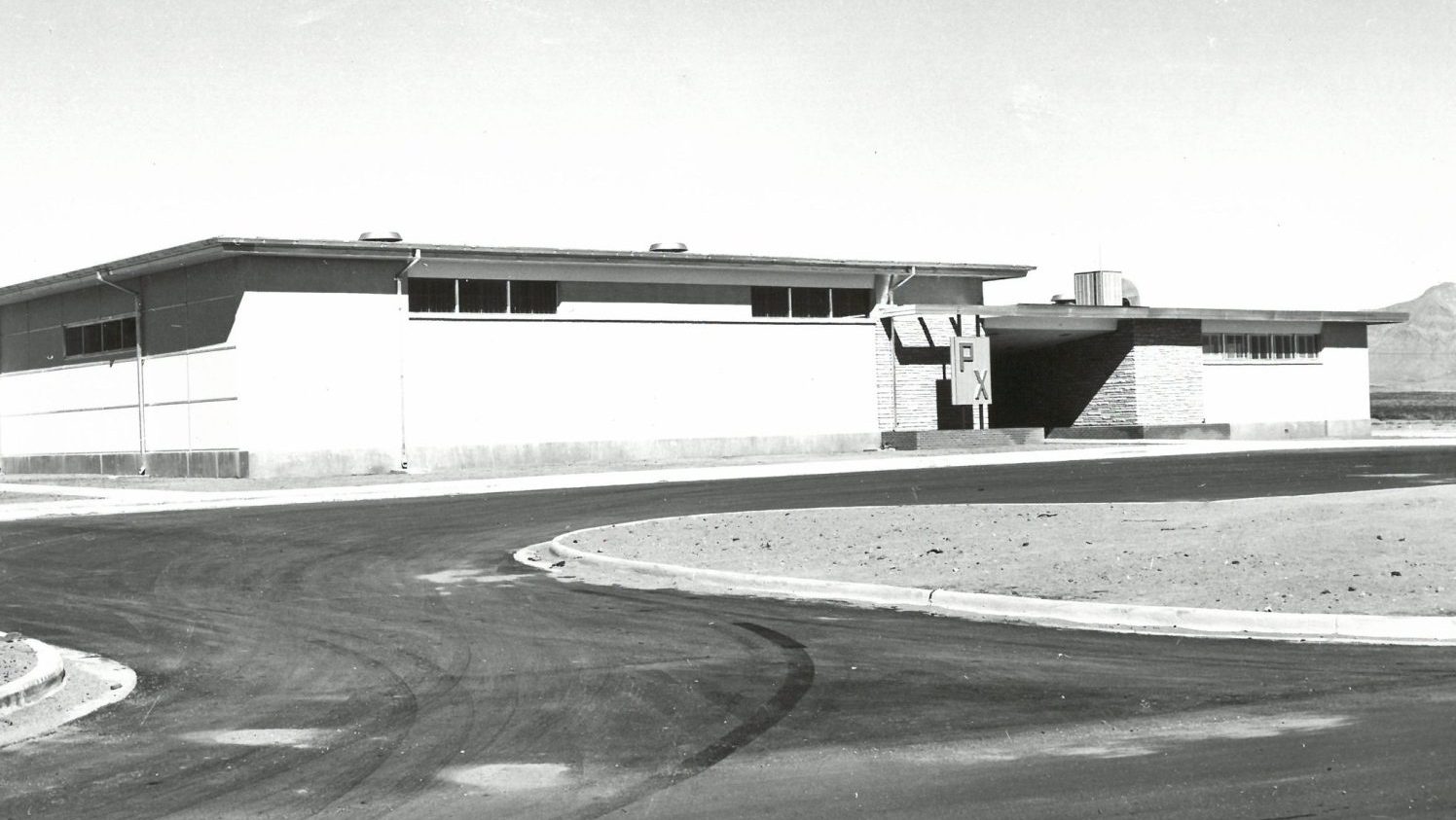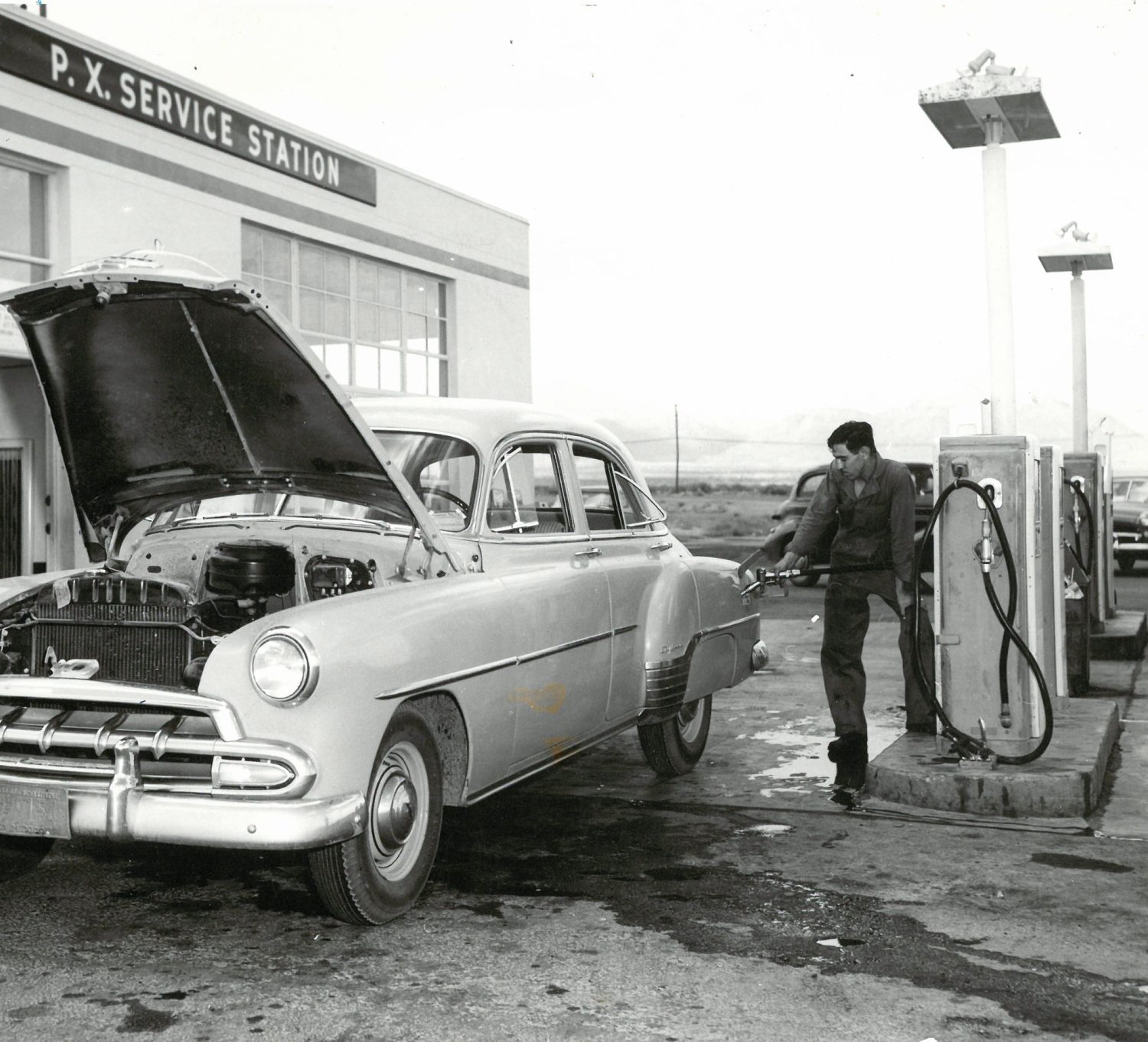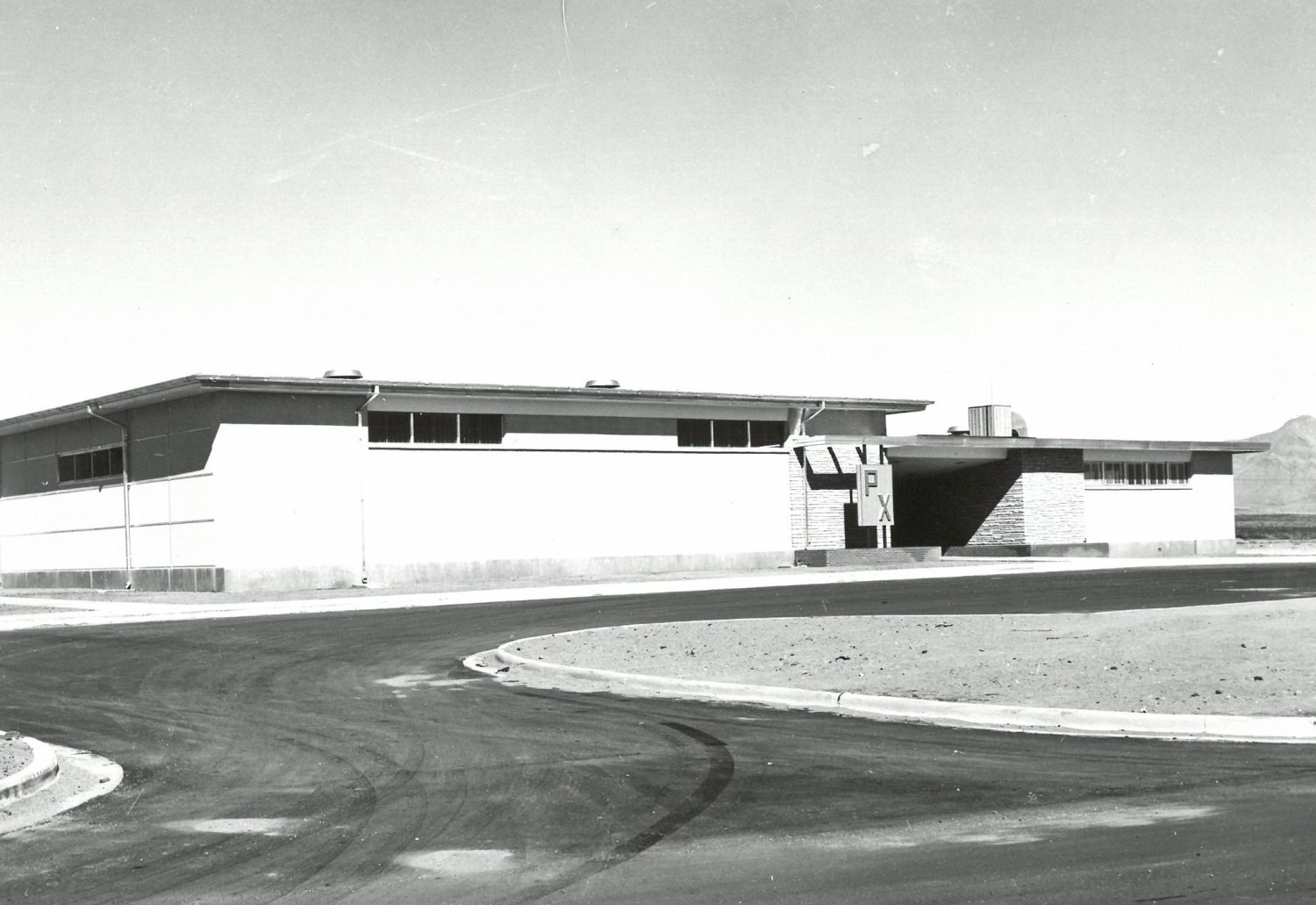Flashback Friday: The White Sands Missile Range Exchange and Its Links to the Nuclear and Space Age

The movie “Oppenheimer,” and the approaching anniversaries of the Hiroshima and Nagasaki atomic bomb explosions, inspired this look back at the White Sands Missile Range Exchange. Although it opened after World War II, the Exchange’s location connects it to nuclear-age history.
The facility was set up around 1949 as a “satellite” Exchange, according to a feature in the July-August 1965 issue of the Exchange Post.
“Twenty years ago, it was just a large tract of desert ranch land in south central New Mexico,” David Lopez, who had worked at the Exchange since 1952, said in 1965, “It was a part of the Fort Bliss Exchange system and all we had was a small store, a cafeteria and one gas pump.”

Service station at the White Stands Missile Range Exchange, early ’50s. Before this opened, the “satellite” Exchange had one pump, operated by an attendant who was based in his car.
The pump, however, was full-service. The attendant who operated it was based in his car, near the pump. The store and cafeteria were in Quonset huts built by Navy crews.
Originally White Sands Proving Ground, the name changed to White Sands Missile Range in the ’50s as the U.S. increased its rocket and missile research. The White Sands Exchange became a separate store in 1956.
“With more and more military personnel arriving to complement the increased activity, the satellite station could no longer handle the needs of military personnel and their families,” Lopez said.
The main store was moved into a wooden building, and the cafeteria was moved into a building that also housed a barbershop and a branch of a local bank. The single-pump gas station grew into a six-pump station with its own building and two auto-service stalls.
On March 12, 1959, a new main store opened. Four thousand people attended the opening ceremony, at the time the largest crowd ever to attend the opening of a new building at White Sands, which in 1959 was home to 10,000 military and civilian workers and several thousand dependents.

The White Sands Exchange, circa 1959. Four thousand people attended the grand opening.
Officers of the Army, Air Force, Navy and Marine Corps joined Exchange officials and associates at the ribbon-cutting for the nearly 18,000 square-foot building, which housed the main store, the branch bank, a barbershop and watch-repair shop. A cafeteria opened about a month later.
A snack bar was set up 12 miles away in the desert. A smaller version of the main store was set up even farther away, 115 miles uprange at the Stallion Range Center. All the new buildings had central air conditioning and heating—luxuries that weren’t available in the Quonset huts.
White Sands Proving Ground was established on July 9, 1945. A week later, on July 16, the world’s first atomic bomb was detonated in the north-central portion, about 60 miles from White Sands National Monument. Less than a month after that, on Aug. 6, 1945, an atomic bomb was exploded over Hiroshima, Japan; on Aug. 9, another atomic bomb was exploded over Nagasaki. It’s not exactly a spoiler to say that all these events are covered in “Oppenheimer.”
Trinity Site was closed off for several years after the detonation but has been a National Historic Landmark since 1975. The Missile Range sponsors public visits to the site in April and October. The rest of the year, the site is closed to the public because it lies within the impact zone for missiles fired into the northern part of the missile range.
The missile range is also important in space-program history. White Sands Space Harbor was a space-shuttle runway, and Space Shuttle Columbia made a landing there in 1982. It has also been a test site for missile research and a training area for NASA pilots.
For the shuttle landing, which was open to the public, the White Sands Exchange and the nearby Holloman AFB Exchange provided food service for spectators, NASA officials and the media. Food concessions were also available the previous day, when driving winds led to the postponement of the originally scheduled landing. More than 25,000 people turned out for the first day, but only 6,200 were there the day the landing actually happened.
Today, White Sands operations are once again part of the Fort Bliss Exchange. They consist of a troop store that includes a Military Clothing store, a restaurant, an optical shop, a hair salon and a laundromat.
Sources: Exchange Post archives, National Park Service (www.nps.com)

